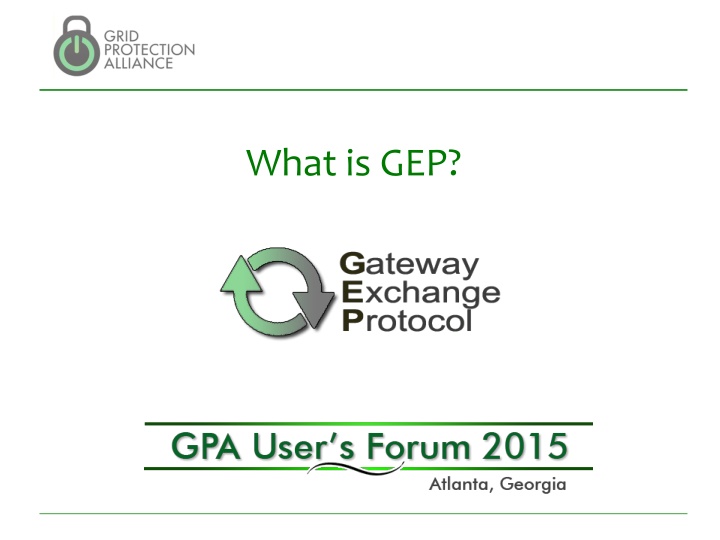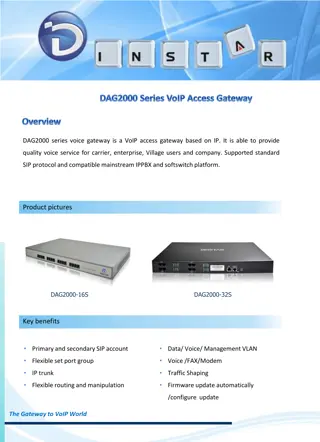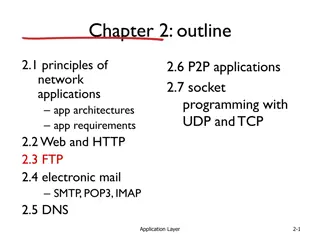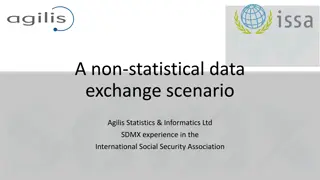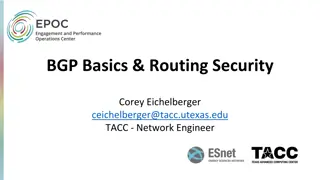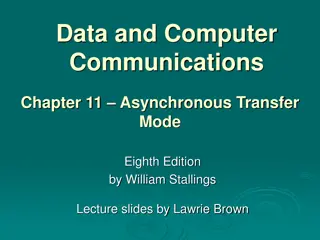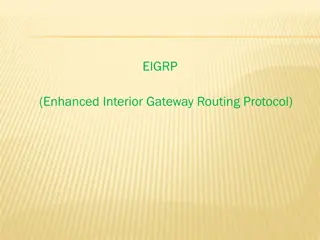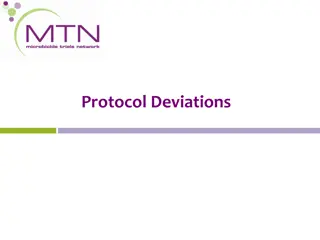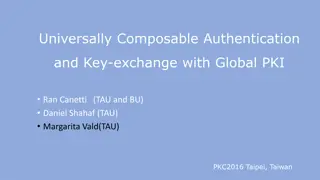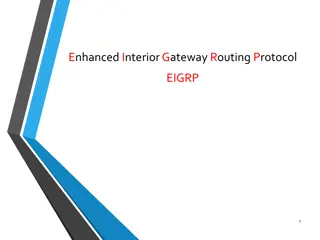Gateway Exchange Protocol - Efficient Data Transfer and Security
Explore the Gateway Exchange Protocol (GEP) designed to support complex systems, multiple data types, and priorities while ensuring efficiency, security, and scalability. Discover the challenges, performance requirements, and typical payload structure of GEP, a protocol that emphasizes high availability, reliability, and secure data exchange.
Download Presentation

Please find below an Image/Link to download the presentation.
The content on the website is provided AS IS for your information and personal use only. It may not be sold, licensed, or shared on other websites without obtaining consent from the author.If you encounter any issues during the download, it is possible that the publisher has removed the file from their server.
You are allowed to download the files provided on this website for personal or commercial use, subject to the condition that they are used lawfully. All files are the property of their respective owners.
The content on the website is provided AS IS for your information and personal use only. It may not be sold, licensed, or shared on other websites without obtaining consent from the author.
E N D
Presentation Transcript
Gateway Design Challenges Performance given system complexity Support multiple data types efficiently and securely Support multiple priorities Minimize latency and maximize throughput High availability assurance Horizontal and vertical scalability SIEGate stability and reliability Graceful performance degradation Security assurance Maximize security performance Minimize security breach impact Configurable security levels Security versus simplicity/usability tradeoff 2
Demanded a New Protocol Highly Performant Really fast Really efficient Scale to millions of points per second in a single stream Leverage common IP transmission unit size to reduce datagram fragmentation Non-fixed payload contents, i.e., points in one packet can be different than the next 3
Protocol Requirements GEP must move a continually variable set of points at low latency to be successful, around 1 million points per second. 1 million assumes 12 associations and 100 PMUs (in and out) = ~ 0.5 M points in / sec ~ 0.5 M points out / sec GEP supports over 4,000,000 measurements per second. 4
Gateway Exchange Protocol Open and non-proprietary True pub/sub, measurement-based protocol Automated exchange of authorized metadata Tightly-compressed, binary serialization of time- series values ID, time-stamp, value, flags Adapters provided in .NET, C/C++ and Java for convenient native integration in other systems Available transports include TLS, TCP, TCP with UDP, TLS with AES key-rotated UDP, or ZeroMQ Lossless compression is also supported. 5
Typical GEP Payload Structure* Serialized Measurement Structure 9 Bytes: Unique ID 2 Bytes 128-bit Guid ID mapped to 16-bit runtime ID Timestamp 2 Bytes 64-bit full resolution timestamp mapped to 16-bit offset Value 4 Bytes 32-bit floating point value Quality 1 Byte 8-bit quality flags Several serialized measurements are grouped together to create a message payload. Total size is adjusted to reduce fragmentation. 6 * Free form payloads also supported.
Primary Data Flow Publication APIs Subscription APIs 8
Primary Data Flow (cont.) Publication APIs Subscription APIs Subscription APIs Publication APIs 9
Gateway Exchange Protocol (GEP) GEP is an extremely simple, small and fast wire format than can be used to exchange data points without a fixed predefined configuration that is: Points arriving in one data packet can be different than those arriving in another data packet. This can be due to each point having a different delivery schedule or a dynamic schedule (e.g., alarms). GEP is a signal level publish/subscribe protocol with two available channels: Command Channel (TCP) Data Channel (UDP or TCP) 11
Synchrophasor Data Protocol Comparisons IEEE C37.118 IEC 61850 GEP Substation Control Center Inter-company Deployment Zones Today Substation Control Center Control Center Inter-company Preconfigured Data Packet Format Yes but client definable Yes No No Yes Yes Security Options Signal Level Publish / Subscribe Yes but not dynamic No Yes 12
Example Interoperability Layers Utility Layer Example Challenges Inter- Reliability Coordinator High Volume at Low Latency Dynamic Configuration GEP Inter- GEP Configuration Management Operating Center IEEE C37.118 Control Center GEP System Integration IEEE C37.118 Device / Substation IEEE C37.118 IEC 61850 Device interoperability Device performance 13
Simple Optimizable Structure Measurement data is well structured and can be safely condensed into a simple data structure (per signal): 16-bit ID (established at connection) Time (condensed where possible) Value (32-bit real number) Flags A highly effective lossless data compression is optionally enabled for the time-series data: Implements an Xor based back-tracking compression algorithm to remove repeating bytes 14
Buffer Block Buffer block measurements define a block of data, rather than a simple measurement value GEP can transmit buffer blocks to transfer serialized data in chunks SIEGate uses buffer blocks for file-based transfers through GEP 15
Options for Connecting with GEP To get data into an application you can use GEP using a variety of API options: C++ Java .NET Mono.NET Unity 3D 16
GEP Security Modes Transport Layer Security Mode TCP command channel is secured using TLS certificates exchanged out of band Optional UDP data channel is secured using rotating keys exchanged over TLS command channel Measurement access restricted on a per subscriber basis Gateway-to-Gateway Security Mode TCP command channel is secured using symmetric AES encryption keys exchanged out of band Optional UDP data channel is secured using rotating keys exchanged over encrypted command channel Measurement access restricted on a per subscriber basis Internal Access Mode (No Encryption) Data transferred openly (ideal for internal connections or VPN transfers when connection is already encrypted) Measurement access is unrestricted 17
Steps to Exchange Data 1. Subscriber creates an authorization request Generates an SRQ file Send the SRQ file out-of-band (email, thumb drive, CD, etc.) Publisher imports SRQ file Authorizes subscriber to connect, but still cannot subscribe Publisher authorizes subscriber to subscribe to measurements Publisher can control which measurements that subscriber can see Subscriber subscribes to measurements Subscriber can control which measurements that subscriber needs to see 2. 3. 4. 18
Subscriber Creates an Authorization Request You Me Email SRQ SRQ 19
Publisher Imports SRQ File You SRQ 20
Publisher Authorizes Subscriber to Subscribe to Measurements You 21
Subscriber Subscribes to Measurements You I ll take the Shelby frequency, medium-rare. Me 22
DataPublisher API Usage Attach to publisher events Initialize publisher Start publisher Queue new measurements for processing Purpose: SEND 23
DataSubscriber API Usage Attach to subscriber events Set up subscription info objects Initialize subscriber Start subscriber connection cycle Handle new measurement data Purpose: Receive 25
GEP Demo Demonstrate GEP operation over an asynchronous .NET socket based transport using high-speed, high- bandwidth message distribution. 27
